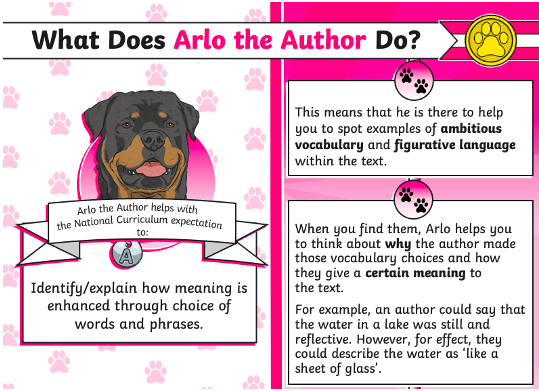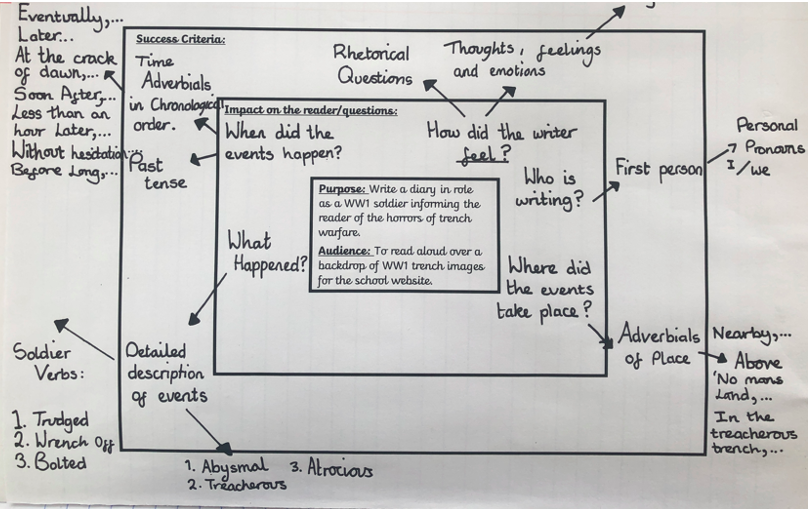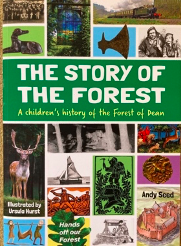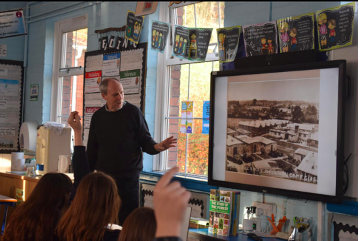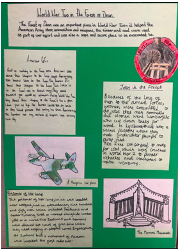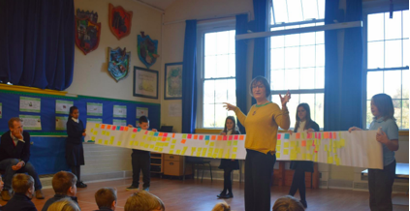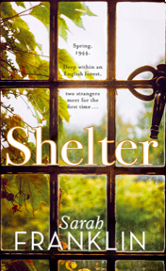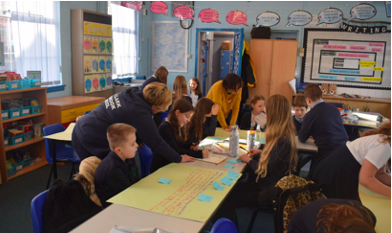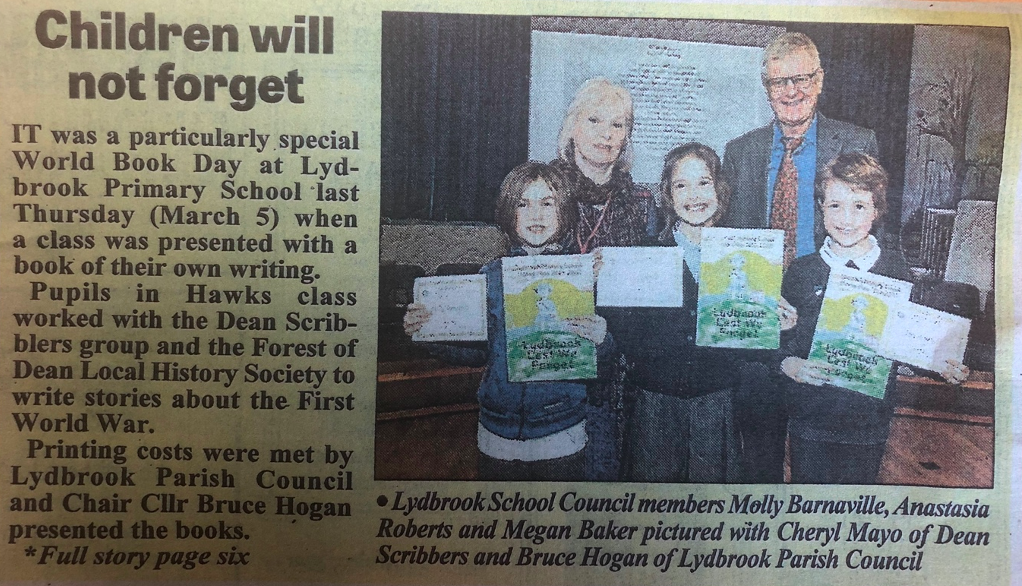Approaches to Writing
How is writing taught at Lydbrook School?
Immersing children into their new writing:
Children are inspired to write through our immersive, creative themes which are supported by high-quality class texts. Children are ‘hooked’ into their new writing and immersed in the subject matter.
Discussing it as a Reader:
Writing is closely linked to reading as we believe that great readers make great writers! Children understand the audience and purpose of their writing which supports them in making an explicit link between the reader and writer whilst collecting vocabulary from different sources including high quality texts, thesauruses and LinkyThinks synonym wheels.
During this stage, children explore, collect and carefully consider the impact of vocabulary on the reader linking to the reading dog, Arlo the Author.
Children then apply their vocabulary to a short writing outcome considering the impact of their chosen vocabulary on the reader.
Discussing it as a Writer:
Children then discuss the structure of a new writing genre to identify the success criteria and how they will be successful in their own writing.
Again, the link between the reader and writer is explicit at this stage as we use a ‘Box it up’ approach when analysing a WAGOLL (What A Good One Looks Like). Identifying the success criteria and vocabulary is linked to the intended impact on the reader as seen in the example ‘Box it Up’ below.
Talk for Writing:
Children in Magpies Class use Pie Corbett’s Talk for Writing approach. A key feature of Talk for Writing is that children internalise the language structures needed to write through ‘talking the text.’ They do this by learning a model text during this stage of the writing process. Please watch the impressive video below of Magpies Class reciting their model text linked to their 'Polar Explorers' theme.
|
|
IMG 0874 | [mov 90MB] |
|
Support it:
Grammar and Punctuation:
As well as being supported in creating cohesive, creative texts appropriate to the subject matter, it is imperative that children are supported to apply age-appropriate grammar and punctuation to their writing. Each child from Year 2 is given at least two writing targets from the Grammar and Punctuation appendix of the National Curriculum. Through this stage of the writing process, children are explicitly taught a grammar and/or punctuation objective and how this can be applied to their writing.
Each lesson also begins with a punctuation and grammar ‘revision’ question which is linked to the context of the current writing cycle. As well as supporting children in remembering key terminology linked to the Grammar and Punctuation National Curriculum, it also allows them to explore how they can be applied to writing.
Supported to write paragraphs:
Children are supported to write paragraphs using a variety of different techniques. The most appropriate methods will be identified by the class teacher considering the specific needs of the class/groups of children.
- Slow Write:
Children are given ‘instructions’ for each sentence within a paragraph which is first modelled by the teacher who ‘thinks aloud’ vocabulary choices and sentence construction linked to the audience and purpose.
- WABOLL:
Children are exposed to a WABOLL (What A Bad One Looks Like) with the aim of improving it against the Success Criteria and transforming it into a WAGOLL (What A Good One Looks Like).
- Group Write:
Children work collaboratively with a small group of peers to apply the success criteria to write a paragraph/section. This allows children to support and learn from each other.
Writing and Editing
After planning their writing, children apply all that they have learnt to a piece of writing. Throughout their writing, children will be given regular opportunities to self and peer assess against the success criteria and their own personal writing targets.
Children also self-assess against our ‘Every Time I Write’ rules to ensure that they have correctly used punctuation, checked and improved their spellings, applied ambitious vocabulary and copied their writing in their neatest handwriting.
Publish it:
Purposeful opportunities to publish writing are actively sought linked to the original purpose.
Extension:
Writing sequences end with an independent piece of writing where children use the original stimulus as inspiration for writing a different genre independently.
Inspirational Author Visits
Andy Seed
Local author Andy Seed has visited Jays and Hawks Class with his book, The Story of The Forest, to inspire the children to write information texts about WW2 in the Forest of Dean. As well as publishing the texts on the school website, we posted them to Andy: “Many thanks for sending the work that the Hawks did on WWII – I really enjoyed reading it and I do like the way it’s set out in panels with illustrations! It definitely makes it easier to read than one long page of text, and it looks good too. I like the way the information is laid out as well with short lists and facts and figures added to give readers a real picture of what was going on. I’m delighted that The Story of the Forest has proved to be such a useful book and to know that it has played a part in all of the excellent local history work you do at Lydbrook Primary.”
Sarah Franklin
Author Sarah Franklin worked with Jays and Hawks to create an adventure story set in the Forest of Dean during World War Two. Mrs Franklin explained to the children how she developed her characters, planned, wrote and edited her WW2 novel Shelter which is set in the Forest of Dean.
The children then worked together to create their own story plan. It was wonderful to listen to the children's creative ideas about evacuee children arriving at Lydbrook and a German plane crash in the woods.
The children worked in groups to write just one section of the story before putting it together with their classmates to produce one complete narrative. At the end of the morning, each group read their section aloud. The adults were so impressed by the children’s creative vocabulary and how, despite working in different groups to create each section, the story flowed together.
As part of this work, ‘Dean Scribblers’ who aim to encourage young Forest writing talent, published the children’s writing in special keepsake anthologies.

